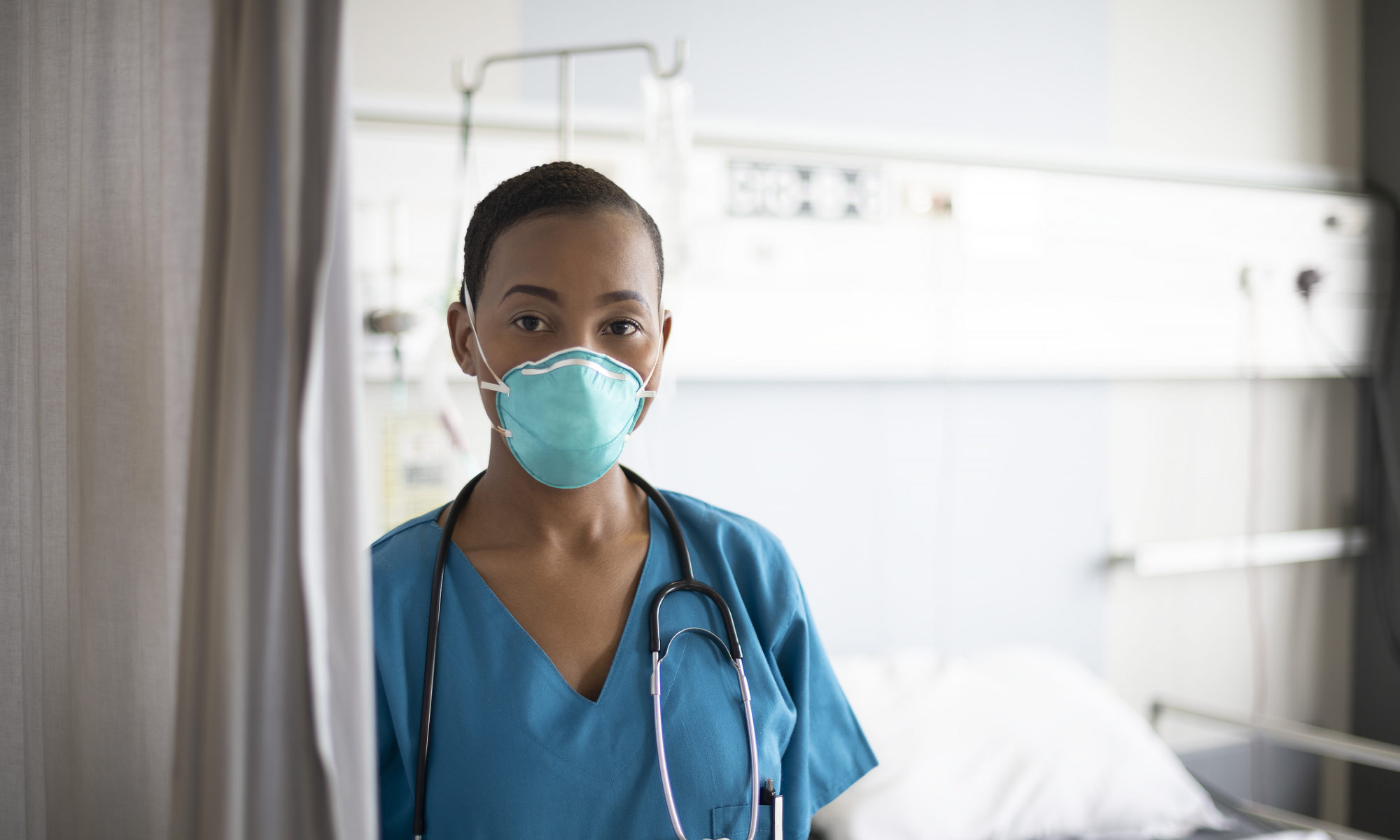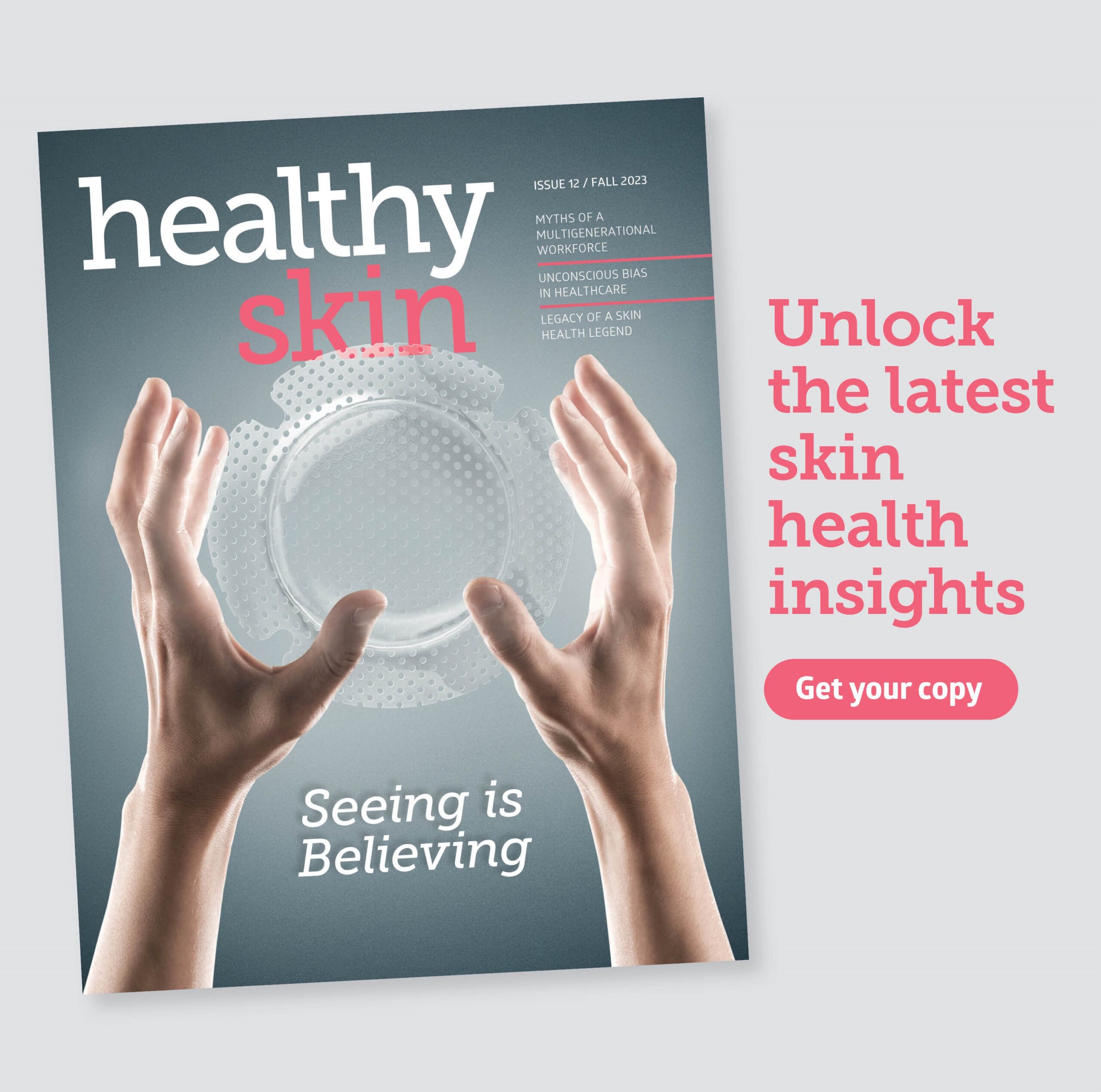N95 Respirators and Facial Pressure Injuries

Tools and tips to protect your skin
By Medline Newsroom Staff | June 30, 2020
The N95 respirator is an example of personal protective equipment (PPE) and can filter most of the smallest of virus particles. But there’s a troubling byproduct of this vital item many might not realize: facial pressure injuries.
Healthcare providers must wear form-fitted facemasks and respirators to care for COVID-19 patients, sometimes for hours on end. According to the National Pressure Injury Advisory Panel (NPIAP) N95 respirator masks have a particularly high risk for injury due the required tight fit around the face. These pressure injuries are a result of friction and the accumulation of moisture under the mask.
Medline Clinical Manager Anita Meador, BSN, RN-BC, CWCN, COS explains, “Any skin damage associated with interruptions in an individual’s skin integrity permits a potential pathway for dirt and germs to enter the body through the skin.”
Adjusting the mask for 15 minutes every two hours is a guideline from the NPIAP for preventing injury. With the non-stop nature of care needed during this global pandemic, this frequency can be challenging. Other simple steps can help keep caregivers’ skin safe and reduce the risk of these medical device-related pressure injuries.
“Prevention is the first step in keeping the skin healthy and intact,” notes Meador. “Inspecting the skin before and after mask use and afterwards maintaining a routine of cleaning and moisturizing the skin in the at risk areas (nose, cheeks, chin and ears) is key.”
Meador says before you follow these tips to protect against pressure injuries, you’ll need a few tools like a liquid skin sealant/protection, a low profile foam or thin dressing, moisturizer, and scissors.
- First, wash hands properly and remove any makeup or oils from the face focusing on the cheeks and nose.
- Once the skin is dry, apply a skin protective barrier around the area where the mask comes into contact with skin.
- Cut foam or thin dressing into thin strips to fit behind the ears.
- Place these strips where the facemask/respirator touches the ears.
- Put the mask on and adjust to ensure comfort.
The NPIAP suggests continued care should occur after the healthcare provider’s shift when it is safe to remove the mask. Wash hands and face thoroughly. Next, apply moisturizer to help maintain the skin’s natural moisture balance. Combining skin care to reduce the likelihood of pressure injury is key to the success of our healthcare provider’s safety.
Explore more Skin Health insights.
*Disclaimer: NPIAP is not making a recommendation on the use of thin prophylactic dressings under N95 respirator masks at this time due to critical uncertainties regarding whether this practice will increase the risk of COVID-19 infection.
Please note: If using a prophylactic dressing or other skin protectant product under PPE, double-check to make sure that there is no interference with the efficacy of your PPE. Check out this guide to properly put on and take off a disposable respirator: https://www.cdc.gov/niosh/docs/2010-133/pdfs/2010-133.pdf
Medline Newsroom Staff
Medline Newsroom Staff
Medline's newsroom staff researches and reports on the latest news and trends in healthcare.
